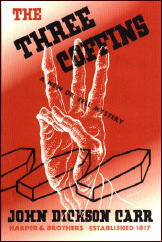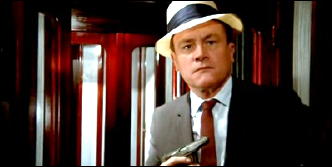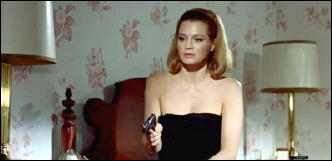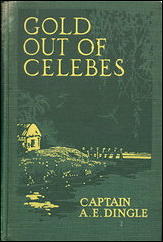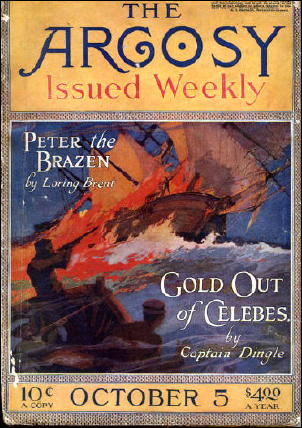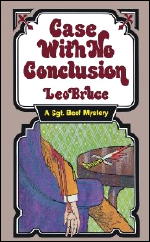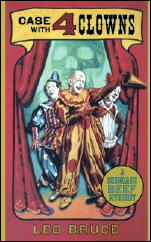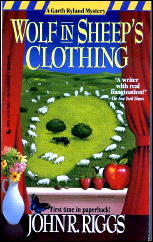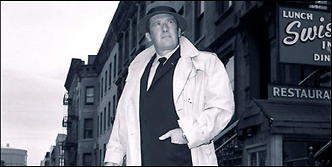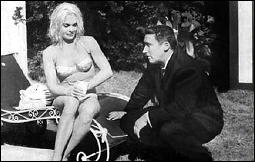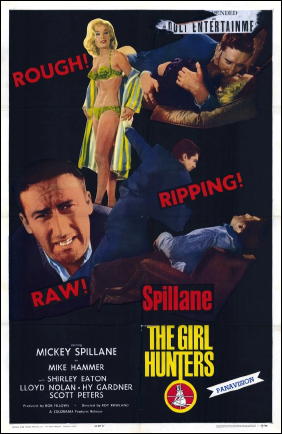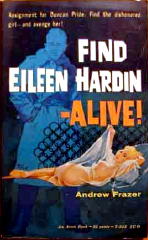THE SECOND GREAT PAPERBACK REVOLUTION:
E-Books and the Second Coming of the Pulps and The Paperbacks
by
David Vineyard
 
It is common on this blog for myself, and others, to bemoan why so many of the great (and admittedly not so great) writers of the past are not represented in today’s book market. The lament usually goes something like this:
They don’t write them like they used to, and all the great old books are lost, forgotten. You can’t find (choose the name of your choice) in print. The only books out there are dull and badly written in comparison. The new generation doesn’t know what it is missing …
In the immortal words of Seinfeld: ‘Yada yada yada…’
Well, I sorry to deny my fellow curmudgeonly collectors and readers one of our pet hobby horses, but our favorite lament is no longer true, and so untrue that the solution to the problem is not in some dusty musty smelling used bookstore, crowded book fair or busy convention where you have to cram a year’s worth of book hunting and buying into a few cramped hours, but no farther away than a fingers touch away and under $10 in cost.
In the last 24 hours I have recreated some major elements of my lost collection, and the most it has cost me for a single volume has been $4, in many cases less than $1. Understand I’m not just talking about obscure or once famous writers from another age, though I’ve recovered my complete Charlie Chan, Philo Vance, Mr. Moto, Bulldog Drummond, Dr. Thorndyke, Father Brown, Sherlock Holmes, Raffles, and Tarzan collections — all for a grand total of $1.99 (the Tarzan); those have been around almost from the beginning, in public domain.
No, I’m talking about a second paperback and pulp revolution equal to the first, and, like the first, in cheap readily accessible attractive and easily transportable editions. Oh, and I might add so far I haven’t spent a dime for the devices to read them, though I certainly plan to buy an inexpensive Kindle soon. Carrying a thousand books in a device smaller than a trade paperback gives a new meaning to the word ‘pocketbook.’
More importantly, some of these writers haven’t been available at these prices since the 1980‘s.
Who am I talking about?
John D. MacDonald, Dan J. Marlowe, William Campbell Gault, Ross McDonald, Peter Rabe, Wade Miller (the complete Max Thursday for .99 each), Frank Kane, Brett Halliday, Mickey Spillane, Donald Hamilton, Stephen Marlowe, Ed Lacy, Henry Kane: and from the pulps, Nebel, Chandler, Hammett, Paul Cain (for free), Carroll John Daly, Robert Leslie Bellem, not to mention Doc Savage, the Spider, the Avenger, the Black Bat, even Nick Carter, Frank Merriwell, and the Rover Boys …
Almost all those books are under $10, most under $5 and many under $1. Some are even free.
Granted, you don’t have the pleasure of an actual book in your hands, and it takes a bit of time to adjust to reading in this format (arguably the Kindle, Nook, etc are closer to actually reading a book), but many of the complaints I’ve heard lodged against e-books here echo what was said of the pulps and paperbacks as well. E-books will never replace the feel of a book, certainly not a leather bound or quatro buckram edition with its scent and heft, but frankly I had less than 100 such books in my extensive collection and few of them were worth what I paid for them. E-books won’t appreciate in value either, but they are here, available, and no doubt will develop their own following.
To quote James Joyce, I’m not trying to convert you or pervert myself, but I am trying to point out that this is far and away the most important revolution in books since the paperback was born. When I began collecting it took me years to accumulate books by John Buchan, Sapper, Dornford Yates, Louis Joseph Vance, Maurice Leblanc, Talbot Mundy, Edgar Wallace, Rohmer, Van Dine, and others. Now all it takes is a few keystrokes and a WiFi or DSL connection. I could, with a little effort, and under $500 dollars, download my entire collection of over forty years worth close to $100,000, in less than eighteen hours — and that only because of sheer volume.
I don’t ask that you adapt to the e-book, or even read one, but don’t complain about expensive limited reprint editions or the scarcity of this material. Everyday more volumes are being added and new generations of readers are discovering these writers, people, I might add, who would not have purchased them from a paperback kiosk and certainly not in limited overpriced editions. Most of these books have reviews by people who read and enjoyed them and don’t know there ever was a paperback revolution.
I currently reside in a small town, a small and spectacularly illiterate community, where the only source of books are a high school library and the Dollar General, and neither updates its stacks often or carries much more than women’s soft core porn, vampire and ‘romantic suspense’ novels. A treasure is a remaindered Preston and Childs or Cussler. Once a month, if I’m lucky, I get to a Hastings. For now that’s it. But, at my fingertips I have access to books from around the world in countless languages and libraries as important as Oxford’s Boedelian and Harvard.
Like the first paperback revolution this includes an entire new world of original e-books, many better than you could hope, or no worse than what you find on the mass market book stands at Wal-Mart, and numerous sources of free books. I can also, for far less than the near $30 they cost on the stands, purchase the latest bestseller. You can even purchase an e-book “safe†for $20 to protect your collection — more than I can say for actual books.
Then too, those of us who have been married should welcome the end of those long forbearing stares when our collection threatens to over run the house having already driven the cat and both cars out of the garage and threatening to cause the ceiling to collapse by their sheer weight in the attic…
Books and collecting have always evolved. Don’t be the guy complaining because some German named Gutenberg put all those monks copying books out of business. This is not a fad, it’s a revolution, and standing in the way of one has never been a good idea.
How could any of us complain about our favorite writers being in print and finding new and enthusiastic readers? Because digital editions take up no actual physical space (a Kindle can hold 10,000 books and will only get more powerful), and cost virtually nothing to reprint, the possibilities are endless.
Most of us converted without pain from 16 mm to VHS to DVD, to Blu-Ray. This is the same thing, only here when a format goes kaput you don’t have to replace everything you own in Beta, you download a free converter and soon it’s all back. Granted Kindle won’t play on Nook and so on, but you can get a free app to read any format or get a free Calibre converter for extinct formats like Microsoft Readers LIT that take up little space on your PC and require no tech savvy to use.
For those of us born in the shadow of the first paperback revolution this one is even bigger, and likely more fundamental culturally. You don’t have to embrace it, but recognize what it means. Book collecting will never be the same again. This is the most important thing to happen to books since Gutenberg, I have no idea where it is going, but if it keeps my favorites from the past available I say it’s going in the right direction.
Somehow I don’t think Erle Stanley Gardner or Mickey Spillane would be the least bothered by having their work bring in money in another format — I can promise you Alexandre Dumas, the most business savvy author who ever lived (despite losing everything numerous times) wouldn’t mind at all.
Collectors, and I include myself, need to dismount our high horses before we fall off of them.
Oh brave new world that has such formats in it.
